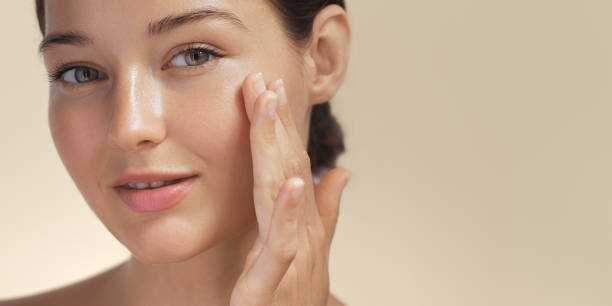Battling Under-Eye Bags: Strategies for Refreshed Eyes
Under-eye bags are a common cosmetic concern that can make people appear tired, stressed, or older than their years. These puffy areas beneath the eyes result from a complex interplay of factors, including genetics, lifestyle habits, and the natural aging process. While often considered a purely aesthetic issue, under-eye bags can sometimes signal underlying health problems. Understanding the causes and exploring various treatment options can help individuals address this persistent challenge effectively. From simple at-home remedies to advanced medical procedures, a range of strategies exists to combat under-eye bags and restore a more youthful, refreshed appearance to the eye area.

Causes Beyond Aging
While aging is a primary factor in the development of under-eye bags, several other elements can contribute to their appearance. Lack of sleep is a well-known culprit, as it can lead to fluid retention and dark circles that accentuate puffiness. Dietary factors, such as high salt intake, can cause water retention throughout the body, including the under-eye area. Allergies and sinus problems may also play a role by causing inflammation and swelling in the surrounding tissues. Genetics significantly influence an individual’s predisposition to under-eye bags, with some people more prone to developing them earlier in life or to a greater extent than others.
Lifestyle Modifications for Prevention
Addressing under-eye bags often begins with lifestyle changes that can help prevent or minimize their appearance. Ensuring adequate sleep—typically 7-9 hours per night for adults—is crucial. Proper sleep hygiene, including maintaining a consistent sleep schedule and creating a dark, cool sleeping environment, can improve both the quantity and quality of rest. Reducing salt intake and increasing water consumption can help minimize fluid retention. Applying a cold compress to the eye area for a few minutes each morning can constrict blood vessels and reduce swelling. Elevating the head during sleep by using an extra pillow can prevent fluid from pooling around the eyes overnight.
Topical Treatments and Skincare
The skincare industry offers a plethora of products targeting under-eye bags. Eye creams and serums containing caffeine can help constrict blood vessels and reduce puffiness. Ingredients like retinol and peptides may improve skin elasticity and collagen production over time. Hyaluronic acid-based products can hydrate the delicate under-eye area, potentially plumping the skin and reducing the appearance of bags. When choosing skincare products, it’s essential to select those specifically formulated for the eye area, as they are typically gentler and less likely to cause irritation. Consistent application is key, as most topical treatments require regular use over several weeks or months to show noticeable results.
Advanced Medical Interventions
For those seeking more dramatic or immediate results, several medical interventions are available. Dermal fillers, such as hyaluronic acid-based injectables, can be used to smooth the transition between the lower eyelid and cheek, reducing the appearance of bags. This non-surgical procedure offers temporary results, typically lasting 6-12 months. Chemical peels can improve skin texture and reduce fine lines around the eyes, potentially minimizing the appearance of mild under-eye bags. For more severe cases, blepharoplasty—a surgical procedure to remove excess fat and skin from the eyelids—can provide long-lasting results. However, as with any surgical intervention, it carries risks and requires careful consideration and consultation with a qualified surgeon.
The Role of Makeup in Concealing Under-Eye Bags
While addressing the underlying causes of under-eye bags is ideal, makeup can provide an immediate solution for concealing them. Color-correcting concealers can neutralize darkness that often accompanies under-eye bags. Peach or orange tones work well for darker skin tones, while pink or salmon shades suit lighter complexions. After color correction, applying a concealer that matches the skin tone can further camouflage the area. Setting the concealer with a translucent powder can help prevent creasing and ensure longevity. When applying makeup to this delicate area, it’s crucial to use a light touch and blend thoroughly to avoid accentuating fine lines or texture.
Emerging Technologies and Future Treatments
The field of aesthetic medicine continues to evolve, with new technologies offering promising solutions for under-eye bags. Radiofrequency treatments, which use energy to heat the deeper layers of skin, can stimulate collagen production and tighten the under-eye area over time. Ultrasound therapies work similarly, potentially offering a non-invasive alternative to surgery for some patients. Research into topical formulations that can effectively penetrate the skin barrier and deliver active ingredients to the deeper layers is ongoing. These advancements may lead to more effective at-home treatments in the future, bridging the gap between over-the-counter products and medical interventions.
Holistic Approaches to Eye Health
While much attention is focused on treating the visible signs of under-eye bags, it’s important to consider overall eye health. A diet rich in antioxidants, particularly vitamins C and E, can support the health of the delicate skin around the eyes. Omega-3 fatty acids, found in fish and flaxseeds, may help reduce inflammation throughout the body, potentially benefiting the eye area. Regular exercise improves circulation, which can help reduce fluid retention and promote overall skin health. Managing stress through techniques like meditation or yoga may also contribute to reducing the appearance of under-eye bags, as stress can exacerbate many skin concerns.
In conclusion, under-eye bags represent a complex cosmetic concern with multifaceted causes and solutions. From simple lifestyle adjustments to advanced medical procedures, the range of available treatments allows individuals to tailor their approach based on their specific needs and preferences. As research continues and new technologies emerge, the options for addressing under-eye bags are likely to expand further. By combining preventive measures, targeted treatments, and overall health considerations, many people can achieve a more refreshed and youthful appearance around their eyes, boosting both their aesthetic satisfaction and confidence.





